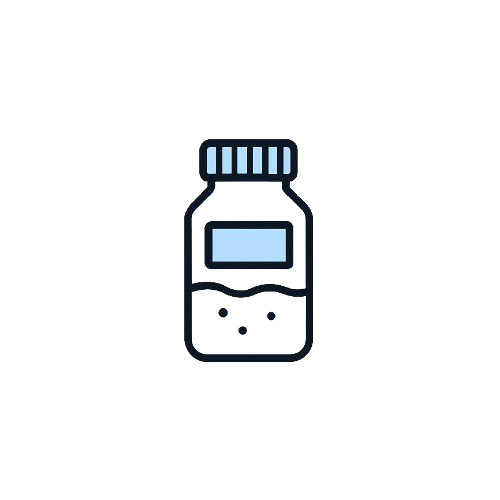Triclosan + Benzalkonium Chloride + Light Liquid Paraffin
Allopathic
Indications
- Topical antiseptic therapy: For prevention and treatment of minor skin infections, including cuts, abrasions, superficial wounds, and burns.
- Management of superficial skin infections: Such as impetigo, folliculitis, and mild infected eczema.
- Supportive care in dermatitis: To reduce microbial colonization and soothe skin irritation.
- Off-label uses: Adjunctive treatment in chronic skin conditions at risk of secondary infection.
Dosage & Administration
- Adults and children (above 2 years):
- Apply a thin layer of the preparation to the affected area 2 to 3 times daily.
- Clean and dry the area thoroughly before application.
- Avoid application on large open wounds or mucous membranes unless directed by a physician.
- Pediatrics: Use with caution in children under 2 years; only if prescribed by a healthcare professional.
- Duration of therapy: Usually 7 to 14 days depending on clinical response; prolonged use should be avoided without medical advice.
Mechanism of Action (MOA)
Triclosan exerts broad-spectrum antibacterial effects by inhibiting enoyl-acyl carrier protein reductase (ENR), a key enzyme in bacterial fatty acid synthesis, disrupting cell membrane integrity and bacterial growth. Benzalkonium chloride is a cationic surfactant that damages microbial cytoplasmic membranes, causing leakage of cell contents and rapid bacterial death. Light liquid paraffin serves as an emollient, softening and moisturizing the skin, thereby maintaining the skin barrier and reducing irritation, which supports the antiseptic effects.
Pharmacokinetics
- Absorption: Minimal systemic absorption following topical application on intact skin; absorption may increase with damaged skin.
- Distribution: Drug remains localized at the site of application with negligible systemic distribution.
- Metabolism: Not systemically metabolized due to minimal absorption.
- Excretion: Any absorbed material is eliminated primarily via renal excretion; systemic levels are negligible.
- Half-life: Not applicable due to topical use and minimal systemic presence.
Pregnancy Category & Lactation
- Pregnancy: Data are limited. Due to minimal systemic absorption, topical use is generally considered low risk but should only be used if clearly necessary.
- Lactation: Unknown if excreted in breast milk; avoid application to breast area during breastfeeding as a precaution.
Therapeutic Class
- Topical antiseptic combination with emollient.
Contraindications
- Known hypersensitivity to triclosan, benzalkonium chloride, liquid paraffin, or any formulation excipients.
- Application on deep wounds, severe burns, or mucous membranes unless specifically indicated.
- History of allergic contact dermatitis related to any components.
Warnings & Precautions
- Avoid contact with eyes, mucous membranes, and large open wounds. Rinse thoroughly if accidental exposure occurs.
- Use with caution in patients with sensitive skin or history of dermatitis to avoid irritation or sensitization.
- Prolonged use may contribute to microbial resistance or cause skin sensitization.
- Discontinue use if local irritation, rash, or worsening symptoms develop.
- Not suitable for systemic infections; medical attention required if infection progresses.
Side Effects
- Common: Local skin irritation, redness, itching, dryness, or burning sensation.
- Rare: Allergic contact dermatitis or hypersensitivity reactions.
- Severity: Usually mild and resolves after discontinuation.
- Onset: Typically occurs within days of starting treatment if sensitive.
Drug Interactions
- No significant systemic drug interactions are expected due to minimal systemic absorption.
- Concurrent topical agents may increase risk of local irritation; stagger application times if multiple topical drugs are used.
Recent Updates or Guidelines
- Regulatory agencies recommend restricting triclosan use due to environmental and resistance concerns; use should be limited to appropriate clinical indications.
- Emollient-containing antiseptic formulations are favored to reduce irritation and maintain skin integrity.
- Continuous monitoring for local adverse reactions is advised during therapy.
Storage Conditions
- Store at 20°C to 25°C (68°F to 77°F).
- Protect from heat, moisture, and direct sunlight.
- Keep container tightly closed when not in use.
- Keep out of reach of children.
